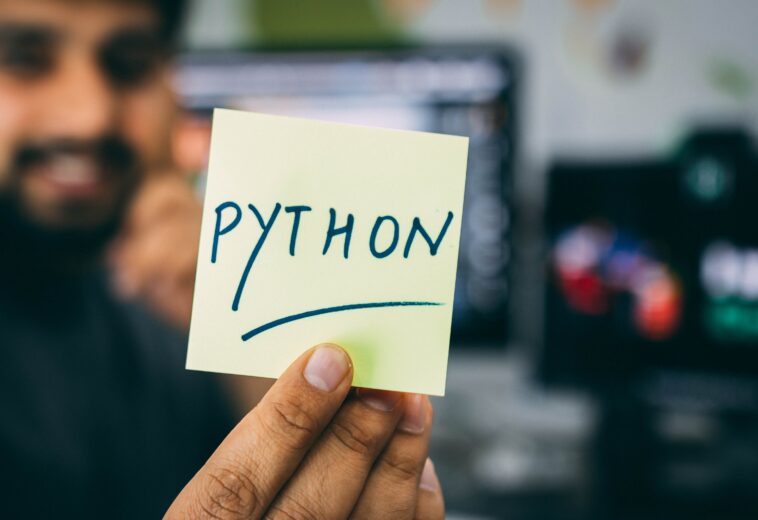Python for VFX Pipeline
How to Learn Python for VFX Pipeline – Your Step-by-Step Guide
Are you ready to embark on an exciting journey into the world of VFX Pipeline with Python? Look no further! In this comprehensive video, we’ll walk you through the essential steps to learn Python, the powerful scripting language, and apply it to VFX Pipeline development.
Python is the backbone of VFX Pipeline, enabling artists and developers to automate tasks, build custom tools, and streamline workflows in software like Maya, Houdini, Nuke, and more. Whether you’re a beginner or an experienced programmer, this tutorial is tailored to help you grasp Python’s fundamentals and apply them effectively to the VFX industry.
Join our expert instructor as we cover everything you need to know about Python for VFX Pipeline. From basic syntax and data structures to more advanced concepts like object-oriented programming and APIs, we’ve got you covered. You’ll also learn about popular Python libraries commonly used in VFX, such as PySide, NumPy, and OpenCV.
Throughout the video, we’ll provide hands-on examples, real-world scenarios, and practical exercises to reinforce your learning. By the end of this tutorial, you’ll have a strong foundation in Python programming, ready to tackle VFX Pipeline challenges with confidence.
Are you eager to enhance your skillset and become an invaluable asset in the VFX industry? Don’t wait any longer! Hit the subscribe button and join our growing community of VFX enthusiasts.
How to Install Python – Step-by-Step Guide
In this video, “How to Install Python – Step-by-Step Guide,” we will walk you through the process of installing Python on your computer. Python is a powerful programming language widely used in various industries, including VFX pipelines. Whether you are a beginner or an experienced developer, learning how to install Python is the first step towards unlocking its full potential.
Join us as we guide you through the installation process for Python, ensuring a smooth and hassle-free experience. We’ll cover installation methods for different operating systems, including Windows, macOS, and Linux, so no matter which platform you are using, you’ll be able to follow along.
Python’s versatility and ease of use make it a must-have tool for anyone interested in VFX pipeline development or automation. So, if you want to dive into the world of Python and take your VFX projects to the next level, make sure to watch this video!
Learn Python Data Types – Explained
In this video, we’ll take you on a journey through the fundamental data types in Python. Understanding data types is crucial for every Python developer, especially when building VFX pipelines where data manipulation and storage are essential.
In this comprehensive guide, we will cover numeric data types like integers, floats, and complex numbers, essential for mathematical operations in VFX pipelines. Additionally, we’ll explore text data types (strings) and how they are used for handling text-based information.
As we progress, you’ll learn about sequence data types such as lists, tuples, and ranges, which play a crucial role in managing ordered collections of items. We’ll also dive into mapping data types, like dictionaries, which are vital for storing key-value pairs efficiently.
Furthermore, we’ll explore set data types, perfect for performing unique operations and testing membership in Python. Lastly, we’ll introduce the boolean data type, which forms the foundation of logical operations in Python.
Whether you’re a beginner or an experienced Python developer, mastering data types is essential for writing efficient and robust VFX pipeline scripts.
Python Function Try Except Print – Handling Exceptions
Exception handling is a critical concept in Python, especially when building VFX pipelines where errors must be managed efficiently to ensure smooth workflow execution.
In this comprehensive guide, we will delve into the ‘try’, ‘except’, and ‘print’ statements in Python, which enable us to handle potential errors gracefully. We’ll explore how to write robust code that can catch and manage exceptions, allowing your VFX pipeline scripts to continue executing smoothly, even when errors occur.
Furthermore, we’ll demonstrate how to handle specific exceptions, tailoring your error handling to different situations. The ‘finally’ block will be introduced as a powerful tool for cleanup operations that need to be executed, regardless of whether an exception occurs or not.
We’ll also cover exception propagation, where exceptions can be passed up the call stack to be handled at higher levels, offering more control over error management.
Whether you’re a Python beginner or an experienced VFX pipeline developer, understanding exception handling is essential for writing reliable and fault-tolerant code.
Python Input() vs. Raw_Input() – Taking User Input
In this informative video, we’ll dive into the two primary methods of obtaining user input in Python: Input() and Raw_Input(). We’ll explore the differences between these functions and when to use each one, so you can make informed decisions when building your VFX pipeline scripts.
Using Input(), you can directly read user input as a string, which makes it versatile and straightforward to work with. On the other hand, Raw_Input() reads the input as a string as well but doesn’t perform any evaluation or data type conversion, giving you more control over data processing.
We’ll discuss how to handle user input and convert it into different data types to perform calculations and other operations effectively within your VFX pipeline projects.
Mastering user input is a fundamental skill in Python development, whether you’re creating VFX tools, automation scripts, or interactive applications.
Python For Loop Explained – A Comprehensive Guide
In this informative video, we’ll demystify the for loop in Python and its various applications. The for loop is a fundamental concept in programming, allowing you to execute a block of code repeatedly, making it ideal for VFX pipeline tasks.
Learn the basic syntax of the for loop and how to use it to iterate through lists, strings, and other iterable data structures. We’ll explore the powerful range() function to generate numeric sequences and demonstrate how to use nested for loops to handle complex iterations.
In the VFX pipeline context, for loops are invaluable for automating repetitive tasks, processing data, and iterating through multiple elements efficiently.
Whether you’re a beginner or an experienced Python developer venturing into VFX pipeline development, this video will provide you with a solid understanding of for loops and their practical applications.
Python Tutorial: Executing External Programs with Python
In this comprehensive video, we’ll guide you through the process of executing external programs using Python’s powerful subprocess module. Whether you’re automating tasks in your VFX pipeline or dealing with data processing, executing external programs can save you time and effort.
Discover how to run shell commands and capture the output from external programs directly into your Python script. We’ll explore various techniques for handling errors and exceptions, ensuring a robust and stable pipeline.
For VFX pipeline development, executing external programs is essential for integrating various software tools seamlessly. You’ll gain practical insights into how Python can interact with external programs, enabling you to unleash the full potential of your VFX pipeline.
By the end of this tutorial, you’ll be equipped with the knowledge to execute external programs confidently and efficiently within your Python projects.
Hit the subscribe button to stay updated with our latest Python tutorials and VFX pipeline tips. If you have any questions or need further assistance, feel free to email us at contact@hqvfx.com.
Get ready to enhance your Python skills and create powerful VFX pipelines with seamless user interactions. Join us on this learning journey and build an exceptional VFX pipeline for your studio!
For those seeking expert guidance and support in VFX Pipeline development, reach out to us at contact@hqvfx.com. Our team is dedicated to helping you learn, build, and thrive in the dynamic world of VFX.
- 840 views





